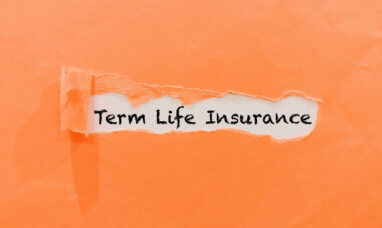Life insurance is generally used to protect your dependents in the event of your untimely death. It creates an instant estate for the family to live off when they no longer have your regular income to depend on.
The past decade has shifted how many people view and use life insurance. The insurance industry has evolved to meet the needs and wants of its customers. The result has been the use of certain life insurance policies, particularly whole life policies, as investment strategies in addition to sources of death benefits.
Whole Life Insurance Defined
Term and permanent are the two types of life insurance policies. Term policies are only in effect for up to thirty years and must be renewed if the policyholders outlive them. They provide death benefits if the policyholder dies within the term that the insurance policy is active. These policies are relatively inexpensive, but they have no additional benefits or use for investing.
Permanent policies include all policies that don’t expire. This means the policyholder will never outlive these policies as long as they continue to make their premium payments. Universal life insurance, indexed universal life insurance, and whole life insurance are all kinds of permanent life insurance.
In addition to providing a death benefit, whole life insurance policies have a savings component called the cash value. Part of your insurance premiums go to the cash value part of the policy. This money can be withdrawn or borrowed against.
The cash value also earns interest. You can end up covering all of the insurance premium costs if you earn enough interest. The interest that accumulates is tax-deferred, so you won’t pay taxes on the interest as long as you don’t withdraw more money than you’ve paid into the cash value.
Whole life insurance is sometimes called “straight life insurance.” When
-
- overfunded whole life insurance
applied to whole life insurance, the word “straight” denotes a policy in which the death benefit remains in place for life as long as the premiums are paid. The policy never expires and the payments never go up regardless of the age or the health condition of the policyholder.
Overfunded Whole Life Insurance
When a policyholder pays more than the minimum premium amount into a whole life insurance policy, the result is an overfunded policy. This can occur as happenstance or if the intent is to overfund the policy so that tax-free loans can be made against it.
As tempting as it may be to use the overfunded amounts for tax-free loans, this plan should only be carried out carefully and under the guidance of a skilled financial advisor. A whole life insurance policy owner does not wish to have a depleted policy when the death benefit is needed.
Benefits of Whole Life Insurance
These policies offer some very attractive advantages, including:
-
-
- Guaranteed tax-deferred growth—The cash value will continue to accrue for as long as the policy is active.
- No premium increases—The premium you pay will stay the same over the life of the policy.
- Tax-free loans—Money borrowed against the cash value is not a taxable income as long as it doesn’t exceed the amount paid toward the premiums.
- Tax-free dividends—Dividends are also tax-free as long as they are derived from the premiums.
- Permanent coverage—The policy is guaranteed for the life of the policyholder.
- No additional health assessments—The policy remains the same even if the policyholder’s health condition changes or worsens.
- Surrender options—The policyholder can surrender the policy at any time to get the cash value back from the insurance company.
-
What Are the Main Disadvantages of Whole Life as a Retirement Savings Strategy?
As good as the benefits look on paper, whole life insurance has some serious drawbacks, including:
-
-
- Higher premiums—The premiums for whole life policies can cost five to ten times as much as those for term life insurance because they are prorated to cover the entire lifespan of the policyholder and offer the added benefit of the earned cash value.
- Slow accrual of cash value—It can take as many as 10 to 15 years to grow enough value to borrow against. Additionally, the premiums may be so high that it is difficult to pay in more to add to the cash value.
- They are complicated to understand—Buyers should not consider whole life policies without the guidance of an experienced insurance agent or financial planner.
-
If the policy is being used purely as an investment strategy, there is no guarantee that the cash value will accrue at a predetermined rate without careful planning and guidance.
If you are interested in the investment side of whole life insurance, there are other types of policies, such as variable universal life insurance, that offer cash value options. As with any policy, proper planning involves researching variable universal life insurance pros and cons.
Investing in a 401K vs. Whole Life Insurance
Investing in whole life insurance gives the policyholder flexibility and complete control. You can access the cash value at any point without penalty and can overfund the policy at will.
A 401k offers the complete opposite. Money can’t be taken out without fees and taxes, the amount that can be put into the 401k is limited, and the investment opportunities are limited by the controller of the 401k account.
That doesn’t mean investors should have to choose one or the other. Both plans can be part of a wealth-building strategy. Just make sure each one is funded so that risks are minimized and the greatest advantages are gained.
When Is Whole Life Insurance a Good Investment?
Even though whole life insurance provides many benefits, it can be out of reach for many people. This is because of the high premiums and the length of time it takes for the cash value to accrue to a serviceable level.
On the other hand, whole life insurance can be the perfect option for someone who needs long-term protection, estate liquidity, and a guaranteed savings account. It is often recommended for business owners and those who have more cash to invest. Under those conditions, whole life insurance can be a great investment.
Featured Image: Twenty20








